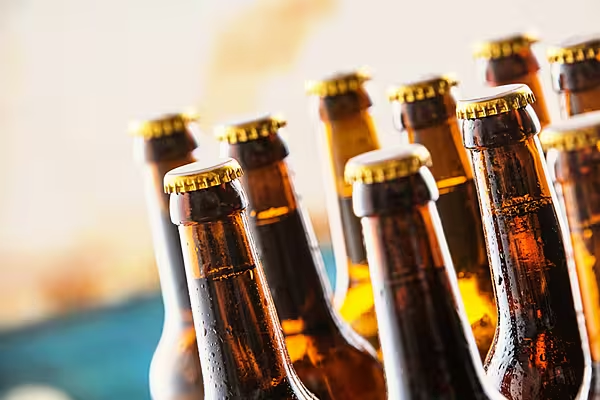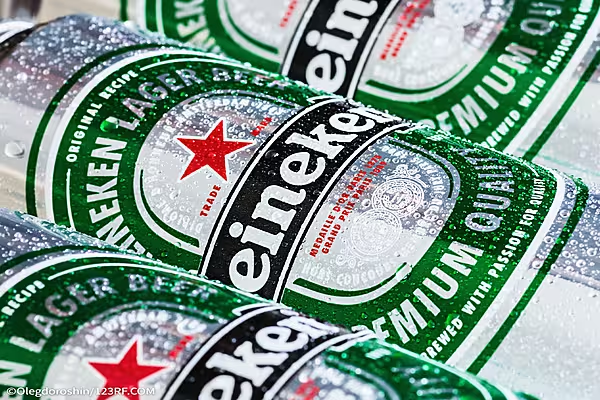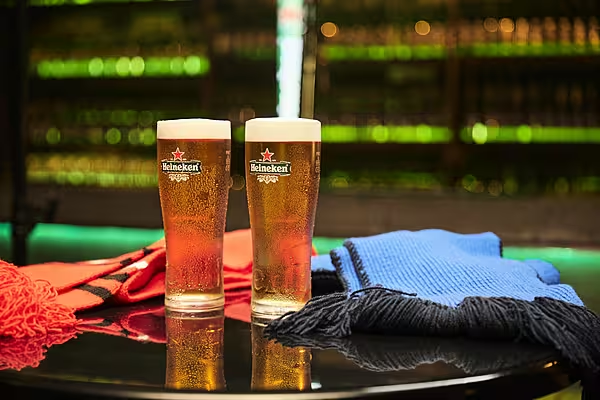Minimum Unit Pricing (MUP) was introduced to the alcohol market across Ireland in January of this year. It was a simple measure that affected wine sales in quite a few ways, many of which won’t be apparent until 2023 gets underway. Kevin Ecock reports.
Price competition for our major brands such as Casillero del Diablo and Santa Rita 120 has now been taken out of the market. As a result, their minimum pricing is now seen as very good value.
This will continue into 2023 and, as we have already seen with the Santa Rita 8.5% ABV, they now have the opportunity to drill down into lower price brackets simply by bringing lower alcohol alternatives to the market.
Lower consumption of alcohol is, of course, one of the aims of the MUP legislation. It was introduced as a public health initiative.
One doubts, however, if it was ever intended to promote additional sales. That said, as alcohol levels have continued to rise across the world of wine, in tandem with global heating, our MUP on wine may encourage more brands to lower their levels of alcohol.
The very successful Comans brand, McKenna’s from Chile, has already tested these waters.
Unfortunately, due to a warming climate, it is now common to find labels close to 15% ABV, on wines that were two or even three percentage points lower only a few years ago. In 2023, winemakers will continue to reduce alcohol levels at their wineries by artificial means.
Of course, excessively high alcohol levels do not necessarily mean a wine’s taste profile is out of balance – the O’Brien’s Wines’ Domaine Coudoulis Dédicace Lirac, at 15%, continues to be brilliant – but they do have a physical and limiting effect on the wine drinker.
Over the next few years, we will see greater emphasis on wine makers working harder in their vineyards to ‘grow less alcohol’.
This entails bringing their grapes to full ripeness with less sugar than our warming climates are bringing to the table right now.
It will also mean planting grape varieties that are more suited to a warmer climate. Experiments are in place to test, for instance, some Portuguese varietals in Bordeaux.
‘Fatter’ Styles In Vogue
Higher residual sugars in many of our top selling red wines is now commonplace.
As the buying public is supporting these ‘fatter’ styles, where lusciousness is replacing ripeness, we will most likely see even more of these styles on our shelves in 2023.
There is absolutely nothing wrong with this practice, but it remains to be seen whether it is a fad or a genuine trend.
Established quality producer Piergiorgio Castellani introduced one such wine from Tuscany (Forte Ambrone Vino Rosso) as a guest wine to the excellent Italian Wine Sale at SuperValu this year.
On one of the brilliant Zoom tastings that SuperValu conducted in 2022, Piergiorgio introduced the style as bringing an additional and new flavour profile out of Tuscany.
Organic – And Biodynamic
We will continue to see genuine growth in the Low and No alcohol wine market. Kolonne Null from Germany is now available across many independent stores, while big brands – Freixenet, Torres and McGuigans – have established no alcohol labels on sale.
These are now being joined by a growing band of labels that display their organic pedigree.
Until recent times, an ‘organic’ wine was seen as a tad ‘iffy’ and overpriced. There was little interest from the trade other than to pay lip service to the winemakers’ effort.
This has changed and will continue to grow.
A quite brilliant range from Chile, B-Liv, has recently been imported by BWG Foods. It promotes its organic origins with vigour, as the label tells us it is B-honest, B-balanced, and for us to and for us to B-lieve! The wine itself is excellent.
At the recent Rioja Wine Festival in Dublin some of the standout wines came from the Mary Pawle portfolio, one that has always promoted organic wines.
In tandem with this, one of the most asked questions of 2022 was, ‘is this wine vegan?’ Luckily for the wine trade, most wines are!
It is confidently predicted that 2023 will see not just organic and vegan labelling become more commonplace but, at long last, biodynamic labels will be treated with more respect.
With quite literally thousands of vineyards in the Languedoc now converting to an organic status, the exceptional Gerard Bertrand (labels available through O’Briens Wines and Dunnes Stores) will no longer be the solitary beacon for all things organic and biodynamic.
Sustainable Supply Chain
Wine packaging will be brought into sharp focus in 2023.
The ‘letter box’ flat wine bottle, made from recycled PET by Packamama, has this year been adopted by Miguel Torres for his Rio Claro Carmenere sold through Sweden’s alcohol monopoly Systembolaget. Other main brands such as Anakena, Naked Wines and Hardy’s have also decided in favour of the flat PET bottle.
This is in harmony with the wine trade gathering momentum to become world leaders with regards to sustainable agriculture, winemaking, and delivery of the final product.
Miguel Torres is at the forefront of taking climate action to help reduce wine’s carbon footprint. Along with major brand such as Jackson Family Wines and the Symington Group, the Torres Group is a founding member of the influential ‘International Wineries for Climate Action’.
Sustainability and its meaning within a winery, begins at the vineyard and doesn’t end until wines reach their consumers.
With this in mind, distributors across Ireland are now beginning to take their role in delivering sustainability more seriously. This involves electrified vehicles and, in the case of O’Briens Wines, a genuine refit across its estate where detail such as LED lighting and access to recyclables are deployed as often as possible.
2023 will see a lot more with regards to sustainability from both producers and retailers.
In this regard, packaging will include wine in cans, wine in pouches, and a renewed emphasis on Bag in the Box.
Wines Online
2022 saw the return of wine fairs, festivals and tastings. These are important and often show intent on behalf of countries of origin, producers, brand owners and distributors. Dunnes Stores, SuperValu, Aldi and O’Briens Wines led the way in 2022.
It was interesting to see Wines of Rioja, Galicia and Business Ireland South Africa directing a budget towards Ireland. There is little doubt that there will be more activity in this regard in 2023.
Distributor fairs, including Mitchell and Son, Le Caveau, Liberty Wines, and others, were impressive in bringing tastings to the trade. A novel development at these tastings was the appearance of Wineonline.ie. It always seems odd to finally meet the folks behind the screen of Ireland’s online wine stores.
That said, online wine stores have been very active in 2022 and have grown in numbers since the emergence of COVID-19. Wineonline.ie has been joined by innovative voices such as the NudeWineco.ie (organic and biodynamic specialists), StationtoStationwine.ie (Don’t be Afraid – It’s only Wine!), TheAllotment.ie and others.
Coupled with these is the big success of post-pandemic online wine stores operated by traditional bricks and mortar stores. While O’Briens Wines is a clear and impressive leader in this regard, it is an outlet that has been explored by almost every wine store across the land.
Allied to this is the emergence of special offer pricing attached to wines when a loyalty card is used in the purchase. Wine customers are now being encouraged to engage with technology and are rewarded with special prices, case deals, and access to unique products. This has only begun and will become more sophisticated over the coming year.
Price increases are the biggest talking point for anyone who is visiting wine fairs this year, or is in regular correspondence with their principals. These are now coming through every day. Wine will not be seen as a pariah in this, as most imported consumables will increase their prices also.
There may be a shift towards many wines becoming a luxury rather than a weekly spend. At the value end, however, it will be business as usual.
Home-Grown Grapes
One of the great new products in the world of wine is English Sparkling Wine.
The quality is very high and it shows how a fledgling wine trade can take advantage of a value-added product. Canada did this 30 years ago when it led from the top down with a high quality Ice Wine offering.
Grapes are currently in short supply across the south of England. It is encouraging, therefore, to see new vineyards beginning to produce a crop in the south-east of Ireland.
If 2023 is as warm as 2022, we will see the beginning of a new wine trade based on home grown grapes. David Llewellyn out in Lusk may soon be joined by a new and growing band of Irish vignerons.
As fanciful as this seems, Ireland currently has a new and knowledge-based group of wine makers operating across Europe.
These include Liam and Sinead Cabot from Westport, who make brilliant wines under the ROKA label in Slovenia, RoТsТn Curley MW from Ballinasloe, who makes top class wine in Burgundy, and wine makers Simon Tyrrell, Charles Derain and Gerard Maguire (of 64Wine) who own Les Deux Cols.
Each of the themes above will most likely lead to wine shelves in Ireland taking on more variety, diversity and interest than before.
South Africa shows real promise for 2023, but as buyers in Ireland are now more adventurous than they have ever been, we are as likely to see rich reds from Germany, delicate whites from Romania, or even Cypriot grapes grown in south Australia.
2023 Checkout – your source for the latest Irish retail news. Article by Kevin Ecock. Click subscribe to sign up for the Checkout print edition.









